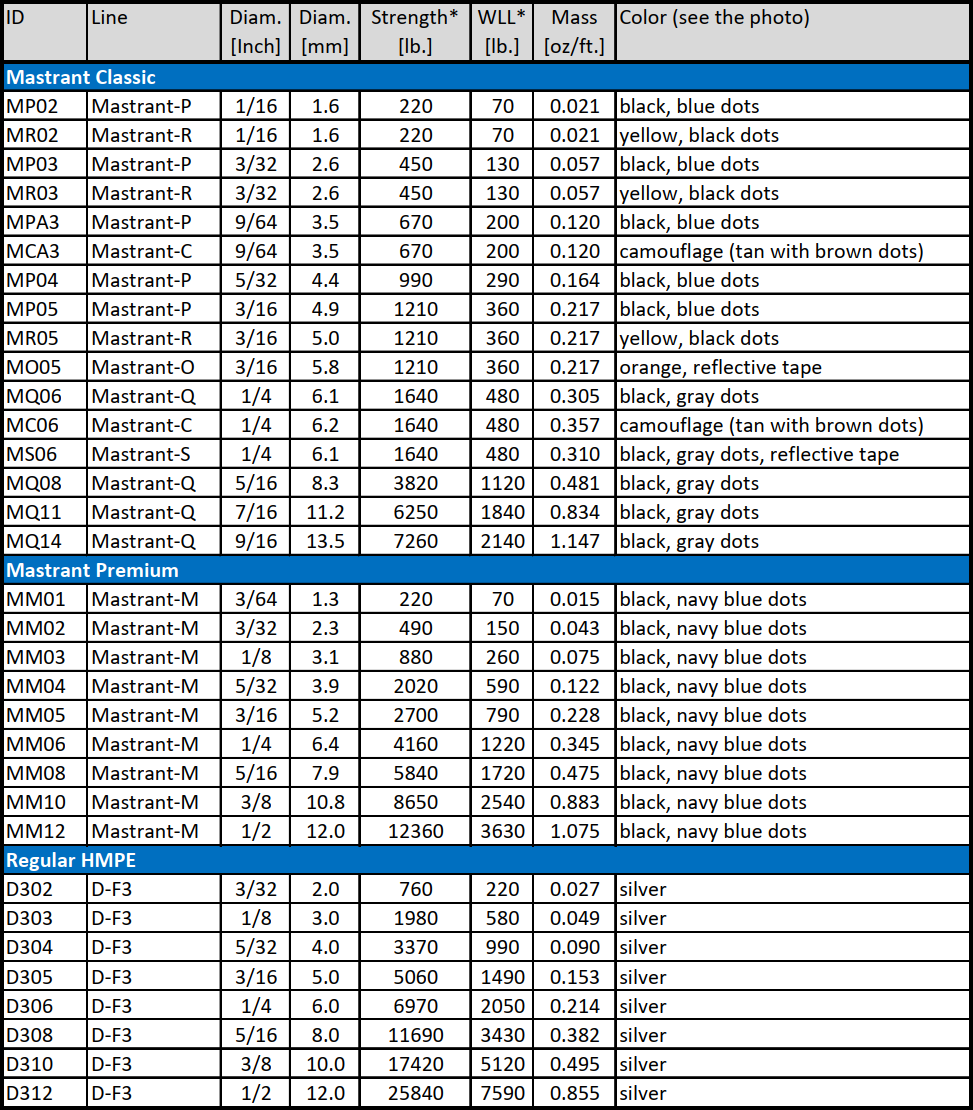Product Specifications
Our specialty is the production of synthetic ropes and associated termination equipment for high quality, long life support assemblies in outdoor environments with minimal elasticity. All products carry the ISO 9001 quality certification.
All assemblies are made from either our Classic or Premium Rope line depending on the exact application or customer specifications.
- Classic – for general use, diameters range from 1/16” to 9/16” in an array of different colors including the high visibility Orange reflective additive.
- Premium – for high strength low stretch applications in similar sizes as the Classic

Rope specifications

Notes
Strength* [lb.] - breaking strength
WLL* [lb.] - Work Loading Limit
Price* [$/ft.] - Unit price, spools 330 ft.
Good to mention
HMPE and Creep
Creep is different than what we call "elongation" or "stretch" in the rope parameters. Creep is the gradual elongation of fibers OVER TIME that are under high static tension. The elongation we are referring to is the lengthening and shortening of the rope induced by a change in tension (and not over time), typically by wind in the case of antenna anchoring.
HMPE is the generic name for the fibre material - High-Modulus PolyEthylene. There are many types of HMPE - common ones, produced by many manufacturers, have the creep property. However, there are exceptions (such as Dyneema DM20, which we use for Mastrant-M ropes) that do not have the creep property - and yet they are still HMPE fibers.
What does elongation (stretch) percentage mean?
The elongation in our datasheets is a relative change of the length measured between "pre-tension" (10% of breaking strength) and "working tension" (30% of breaking strength). Example: if you tension a rope to about 10% of breaking strength and it is 100 ft long, then increase the tension to 30% of breaking strength (i.e. three times), the rope with 1% elongation will elongate by 1 ft.
If the tension of the rope is gradually increased, the extension is approximately linear up to about 70% strength. Then the elongation starts to increase until the rope breaks. To be honest, we don't deal much with situations what happens to the rope after it exceeds about 30% of the strength (recommended maximum load, WLL), because we want to build the systems to be safe, so we calculate everything on WLL.
Questions and answers
A lot of useful information can be found here: https://www.mastrant.com/tips-advice/question-answers
